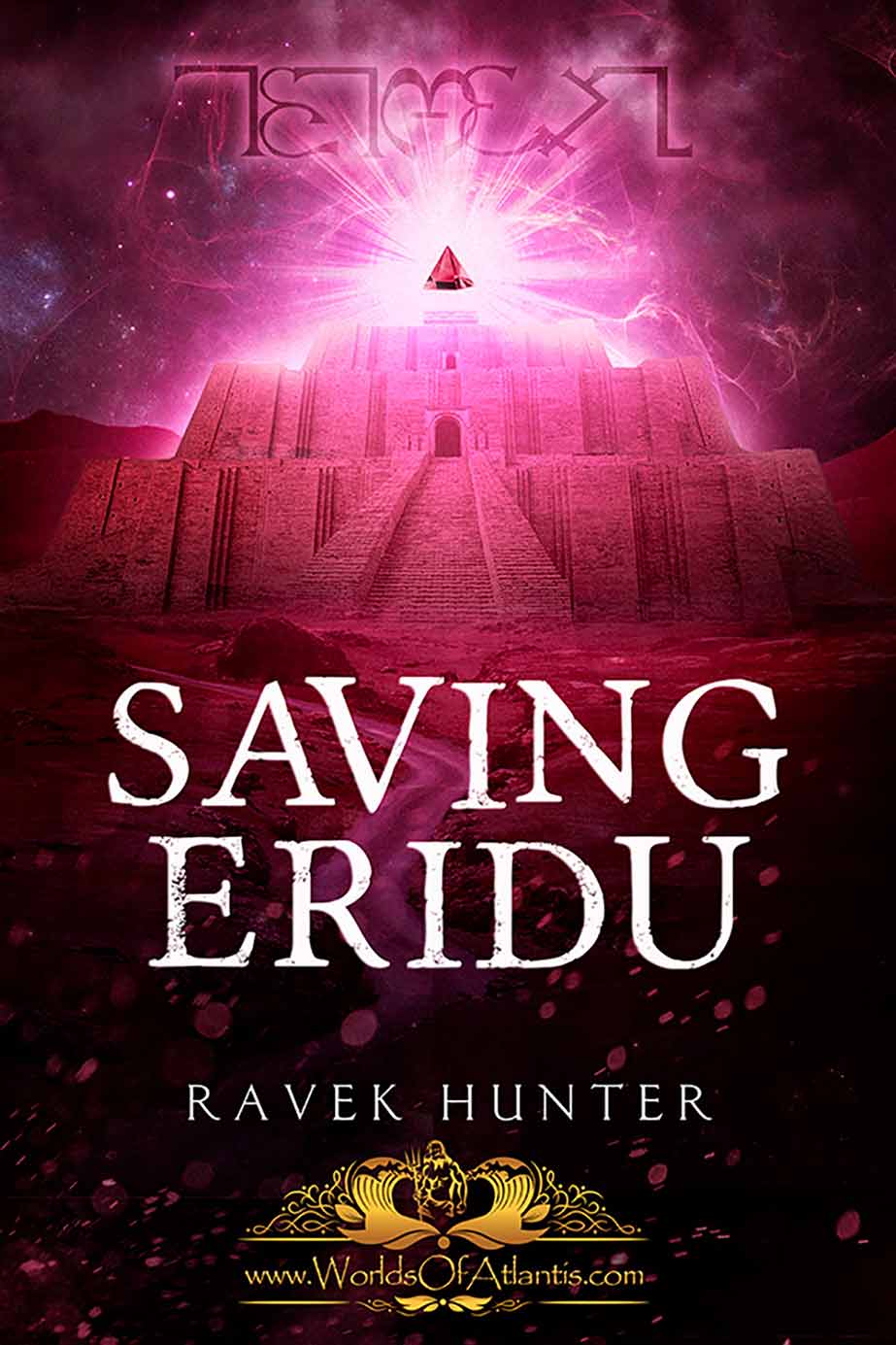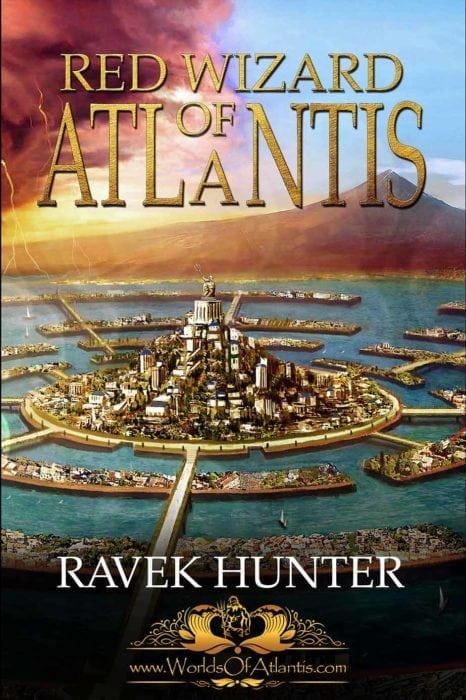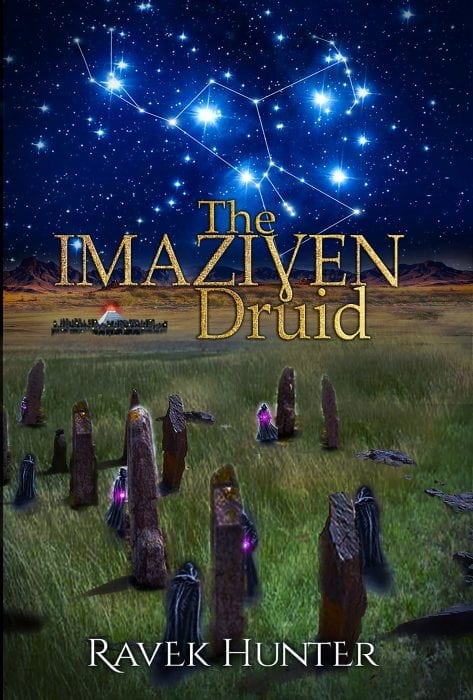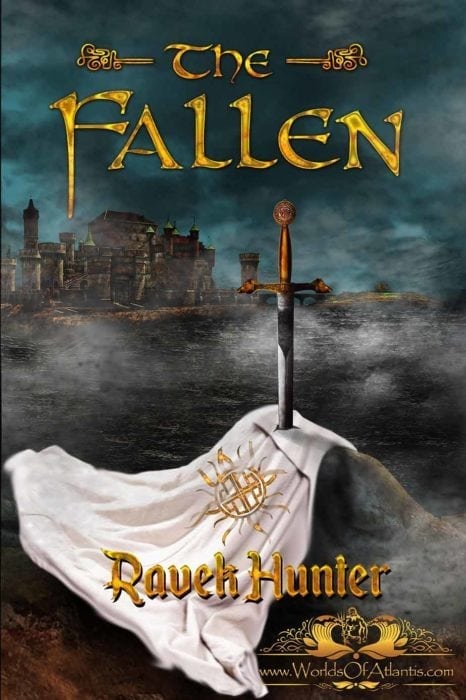Description
Ten thousand years before the ancient civilization of Sumer rose to prominence in Mesopotamia, there were the Sag-gig-ga, or ‘Black-Headed People’ and they called their land Kur-gal . . .
Mysterious symbols written in the blood of murder victims, a respected government official no longer in possession of his own will, a High Priest clever enough to work the political system and ruthless enough to dispatch anyone who gets in its way.
The list of challenges facing Namzu, High Priest of Eridu, is as long as it is daunting. Skilled in the dual arts of investigation and judicial enforcement, Namzu must navigate an ancient world of superstition, myth, and intrigue; a world in which demigods from Atlantis walk among mere mortals; a world inhabited by loyal servants, simple fishermen, mythological cannibals, and unparalleled evil.
Unbeknownst to him, the dark hand of vile corruption has swiftly taken hold and ready to unleash unspeakable evil upon what was previously the peaceful, well-ordered city-state of Eridu in ancient Mesopotamia. With the help of a mystical people known as the Anunnaki and one loyal house servant, Namzu will need every arrow in his investigative quiver to track down and stop the power behind the murders before it’s too late.
Location
Characters
Abgal Ferulianreg of the Yellow Hall: Anunnaki ‘Wise One’ and Atlantean Wizard of the Yellow Hall.
Alu-Abad: Ancient Demon of Sloth. One of only seven named greater demons of the infernal planes that once freely inhabited the earth until they were captured. Free once again, they sew chaos and evil where they can. The Sag-gig-ga know Alu-Abad as an Utug of the Ki-hul.
Arwi-a: Wife of the Sanga, Irra, and mother of Shatamurrim.
Ashmadu: En Ipqu-aya’s personal household servant and confidant.
En Ipqu-aya: The principal priest of Enki and ruler of Eridu in Kur-gal.
Page 1
First Abrig Iblinum: Leader of the Sect of Purification Priests.
First Ashipu Bikku-lum: Leader of the Sect of Healer Priests.
First Lukur Ninedinni: Leader of the Knowledge and Teaching Sect of Priestesses that are responsible for the temple library and schools. A former teacher of both Namzu and Sabum.
First Usgadi Namzu: Leader of the Sect of Judicial Priests.
Gemeshega: Priestess Initiate in service to the Sanga.
Ibi: Fisherman that lives in a village south of Eridu. He has two sons, Atab and Kuda.
Page 2
Lukur Amare: Chaste priestess of knowledge and teaching that works in the temple library.
Nam-en Terrikan of House Elbian: Known to the Sag-gig-ga as the Lord of the Anunnaki, equivalent in rank to the En. He is also the Atlantean Emissary to Eridu, husband of Secria. They have four children: Caagim – Captain in the Empresses guard, Neikrih – their youngest son and the First Mate on the trading vessel Unedros, Rwaxe – the eldest of their daughters born between the two boys and married to a cousin of the Emporer. She recently birthed the first grandbaby boy, and Revane – a school teacher in the City of Atlantis.
Page 3
Nin-digir Shonaturi of House Restander: Anunnaki High Priestess to Enki and Atlantean High Priestess to Pontus.
Ninkum Shubure: Treasurer of the temple.
Pirhum: Initiate in service to the Gi-par.
Sanga Irra: Second to the En, Responsible for the day to day running of the temple. Husband to Arwi-a and father of Shatamurrim.
Sar Shatamurrim: Sar of the Ursagmuda. Son of Irra, Sanga of Eridu and Arwi-a.
Sar Unzi: Sar of the Aga-us within the district of Eridu where the Sanga’s home is located.
Sipa: “Shepherd,” Ashmadu’s benevolent childhood teacher when he was a Suber in the temple.
Page 4
Umbisag Ugazum: Head Scribe to the En.
Usgadi Nawirum-ili: An Usgadi responsible for a village south of Eridu.
Usgadi Sabum: Second to First Usgadi Namzu, leader of the intelligence gathering arm of the Usgadi, rumored assassin ‘Finger of Enki’ and a trusted friend of Namzu.
Usgadi Taribatum and Ahikibani: Usgadi of Districts in Eridu and personal friends of First Usgadi Namzu.
Yaqarum: Usgadi Initiate in service to the First Usgadi Namzu.
Page 5
Behind the Story
Discovery 1 of 4
Kur-gal is a loose confederation of city-states located in Mesopotamia between the Idigna River to the north and the Buranuna River to the south. Their people call themselves the Sag-gig-ga, or ‘Black-headed people’, for their distinctive black hair. The term Sag-gig-ga does not distinguish between slave and free people. There are many words for different types of slaves, but generally they are referred to as ‘Subur’ and free people are called ‘Dumu-gir.” The Sag-gig-ga are an agricultural people, having mastered the skill of irrigation, with an abundance of wildlife to hunt in the lush savannahs that stretch in every direction for hundreds of leagues.
The Rulers of each city-state are called the ‘En’. The En is also the head of the priesthood of the patron deity of their city. In Eridu, the patron deity is Enki, the creation god, while the other city –states have their own patron deity that they worship regularly. Although the patron deity is the primary god in each city, the Sag-gig-ga worship the other gods of the pantheon as well.
Discovery 2 of 4
The city-states and their patron deity:
Unug – Inanna, goddess of love, beauty and war
Bad-tibira – Lulal, First son of Inanna
Shuruppak – Ninlil, goddess of grain and air
Larak – Pabilsag, god of the trees
Zimbir – The Sun-god, Utu
The Sag-gig-ga worshiped may deities; however, there are seven primary deities that they hold in importance above all others and often worship in ritual and ceremony throughout the year.
Discovery 3 of 4
The seven primary deities:
AN – Sky god, Lord of the Heavens, revered above all others. His children with Ki (the earth goddess) are considered the first Anunnaki.
Enlil – God of air, wind and storms, first son of An and Ki (Ninhursag, goddess of the earth). He is considered a creation god for his role separating An and Ki to bring about the creation of the world.
Enki – God of wisdom, male fertility and magic, he is the creator and protector of mankind. He is the second son of An and Ki. Most beloved god of the Sag-gig-ga.
Utu – Sun god. He is the son of the deities Ningal (goddess of reeds) and Nanna (moon-god). Twin sibling of Inanna.
Inanna – Goddess of sex, love and war. She is the first daughter of Ningal and Nanna. A very popular deity referenced in almost every aspect of life in Kur-gal.
Ninhursag(Ki) – Goddess of the mountains and fertility. She is considered the ‘Mother Goddess’.
Nanna – God of the moon. Father of Inanna and Utu.
Discovery 4 of 4
The Anunnaki are considered demi-gods in Kur-gal. There is substantial mystery surrounding their specific parentage and are thus generally deemed by the Sag-gig-ga as the earthly offspring of An and Ki. They have the same power and reverence as any EN throughout all of Kur-gal. In Eridu, they live in the Tower of Tongues, a structure believed to allow a common dialect among all the people of the world to communicate with each other. In the other city-states, they occupy a portion of the Ziggurat where they protect and maintain the Orichalcum Crystals that give them their magical power.
Unknown to all Sag-gig-ga, except for the En of each city-state, the Anunnaki are actually Atlanteans. Although they do not interfere with the culture and politics in Kur-gal, they will provide guidance for their prosperity and influence keeping relations between the city-states peaceful.
The Anunnaki are believed to reside in the city of Dilmun in a place called Edin somewhere south of Kur-gal. Edin is said to be a land of prosperity where there is no corruption, disease or death.
Mythology 1 of 3
Kur-gal
Enki, the king of the Abzu,
Overpowering in his majesty,
Speaks up with authority:
“My father, the king of the universe,
Brought me into existence in the universe,
My ancestor, the king of all the lands,
Gathered together all the Me’s, placed the Me’s in my hand.
From the Ekur, the house of Enlil,
I brought craftsmanship to my Abzu of Eridu.
I am the fecund seed, engendered by the great wild ox,
Mythology 2 of 3
I am the firstborn son of An,
I am the ‘great storm’ who goes forth out of the ‘great below,’
I am the Lord of the Land,
I am the Gugal of the chieftains, I am the father of all the lands,
I am the ‘big brother’ of the gods, I am he who brings full prosperity,
I am the record keeper of heaven and earth,
I am the car and the mind of all the lands,
I am he who directs justice with the king An on An’s dais,
I am he who decrees the fates with Enlil in the ‘mountain of wisdom,’
He placed in my hand the decreeing of the fates of the ‘place where the sun rises,’
Mythology 3 of 3
I am he to whom Nintu pays due homage,
I am he who has been called a good name by Ninhursag,
I am the leader of the Anunnaki,
I am he who has been born as the first son of the holy An.”
After the Lord had uttered (his) exaltedness,
After the great Prince had himself pronounced his praise,
The Anunnaki came before him in prayer and supplication:
“Lord who directs craftsmanship,
Who makes decisions, the glorified; Enki praise!”
—Translation by Samuel Noah Kramer, The Sumerians: Their History, Culture, and Character (Chicago: University of Chicago Press, 1963).
Exploration 1 of 2
The land of Kur-gal is very fertile providing a surplus of grain for export to its distant neighbors – Ugarit in the northwest, Yarikh and Aylat to the west and even as far as TaMehu and TaShemau in the distant west. To the east, there are tribes living in or near the Sa-ti-um Mountain Range and beyond that the mysterious people of the Glass Sea.
From across the mountains southeast of Kur-gal comes the feared Mus-lu, reptilian people. It is not know from where they come from or why they occasionally come across the mountains to prey upon the tribes in the Sa-ti-um and sometimes threaten the southern cities of Eridu and Unug. The reptilians are known to relish the flesh of humans which is thought to be one of their motivating factors for making the hard journey over the mountains.
Exploration 2 of 2
Far to the south of Kur-gal is the Valley of Edin where the city of Dilmun is located. No Sag-gig-ga has been allowed to enter the valley to see its wonders first hand. It is said that strange and unusual creatures exist there and wonders of nature abound. The Anunnaki are believed to live in this place where there is no death, no disease and no corruption of any kind. The Valley of Edin is surrounded by lakes, rivers, mountains and forests. Legends speak of those who have tried to enter Edin through one of these ways only to become lost and wander forever or drown when they could not find their way back to shore. Whatever the truth, the only sure way into Edin is through the gates of Dilmun and the Anunnaki guard them carefully. The closest any Sag-gig-ga has come to entering Dilmun has been the permanent trade camp outside of the city where all foreign merchants and traders are permitted to conduct business with the Anunnaki who come out from Dilmun to purchase their wares.





Verified Reviewer
I was really into fantasy and I found this book and now i am looking for more books on atlantis. – Amazon
Verified Reviewer
Excellent read. A thoroughly researched world setting that immersed me into the story which was a fantastic crime/thriller. – Barnes and Noble
Verified Reviewer
This was a fascinating story based in Mesopotamia thousands of years ago. . . No spoilers, read the book! – Amazon
Verified Reviewer
…would definitely recommend this to anyone that is into the fantasy genre. It’s a little different than your traditional knights/dragons/wizards and is a refreshing change. – Amazon
Verified Reviewer
Excellent read. Even though I don’t normally read this type book, I really enjoyed this book and this new author. – Amazon
Verified Reviewer
I haven’t read a book I’ve loved this much in a long time! I haven’t put it down since I’ve gotten it! So interesting and well written! – Amazon
Verified Reviewer
Saving Eridu works like a map of its own unique world. Writer Ravek Hunter does what should be done in a fantasy novel, taking us to a different universe and keeping us interested in the work as we go. – Netgalley